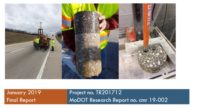Office buildings in American downtowns that have sat empty or near-empty since real estate footprints shrank during the COVID-19 pandemic, and other underused commercial properties, may see more conversions to residential units under new guidelines announced Oct. 27 by Biden administration officials.
The U.S. Department of Housing and Urban Development (HUD) and the U.S. Department of Transportation (DOT) are opening up billions in low-interest loans, tax credits and other financing assistance to streamline the sale of unused commercial buildings to help address a shortage of affordable housing.
A DOT official said $10 billion has been set aside from the 2021 Infrastructure Investment and Jobs Act to fund the new projects that fall under the expanded definitions of urban renewal and transit-oriented development, but that more funding will be needed as states and cities allow more developers to take advantage of the programs.
More than $35 billion in the Transportation Infrastructure Finance and Innovation Act (TIFIA) and Railroad Rehabilitation and Improvement Financing (RIF) programs is already available for low-interest loans to kick-start many kinds of development near transit infrastructure. The list of projects that can apply to these programs will now include commercial-to-residential conversions.
DOT will also offer technical assistance to states, municipalities or non-profit organizations applying for the loans. Currently a TIFIA loan can cover up to 49% of a project's cost and a RIF loan 75%. The rest of the funds must be provided by state, local or private investment.
"The pandemic really changed the patterns of how many Americans work," Transportation Secretary Pete Buttigieg said. "Right now across the country, we're seeing decades-high levels of office vacancies in the downtowns.
"While at the same time, many of America's cities and towns face a steep shortage housing, and families are struggling to afford housing and transportation," he added.
The General Services Administration also announced plans to work with the Office of Management and Budget to identify surplus federal properties that could be sold for affordable housing development.
HUD also is updating its guidance for community development block grants to show local governments how they can use those funds for commercial-to-residential conversions.
It is the first time in 15 years that guidance has been updated, according to HUD Deputy Secretary Adrianne Todman. “HUD’s mission is to create strong, sustainable and inclusive communities and also quality affordable housing,” Todman said.
Buttigieg said the new guidance "will make it easier for transit agencies to transfer properties" no longer needed for direct transit purposes, such as an underutilized storage facility, so they could be converted into affordable housing.
The intention of the changes to the federal guidance is "to make the most of this opportunity to add more housing near transit in ways that not only reduce the cost of housing," he added.
Todman cited the loosened redevelopment restrictions implemented under then-Mayor James Hahn in Los Angeles decades ago that led to redevelopment and housing availability in the city, which previously had few housing units downtown.
Six federal agencies have 20 programs that can be used to support commercial property conversions to housing with low-interest loans, grants, loan guarantees and tax incentives, according to Todman.






Post a comment to this article
Report Abusive Comment